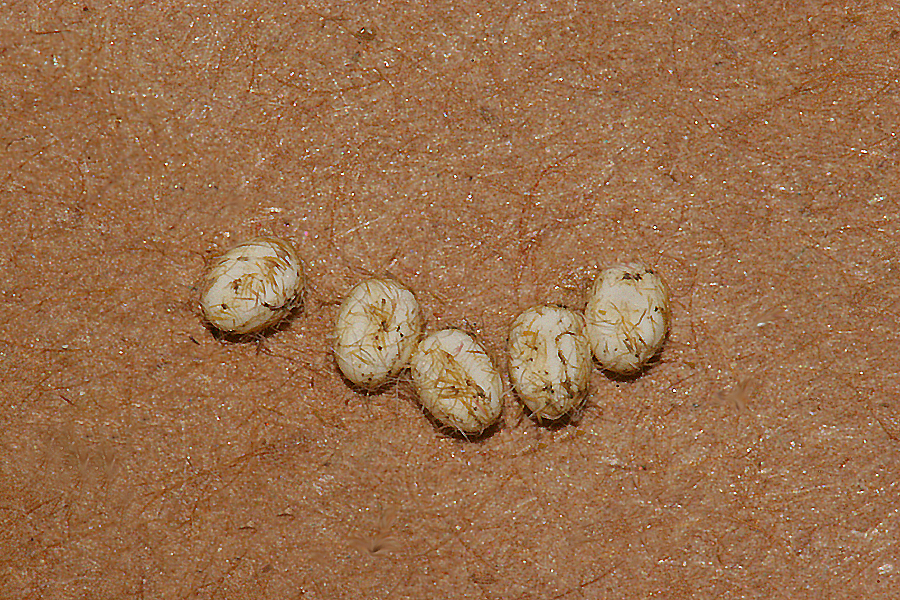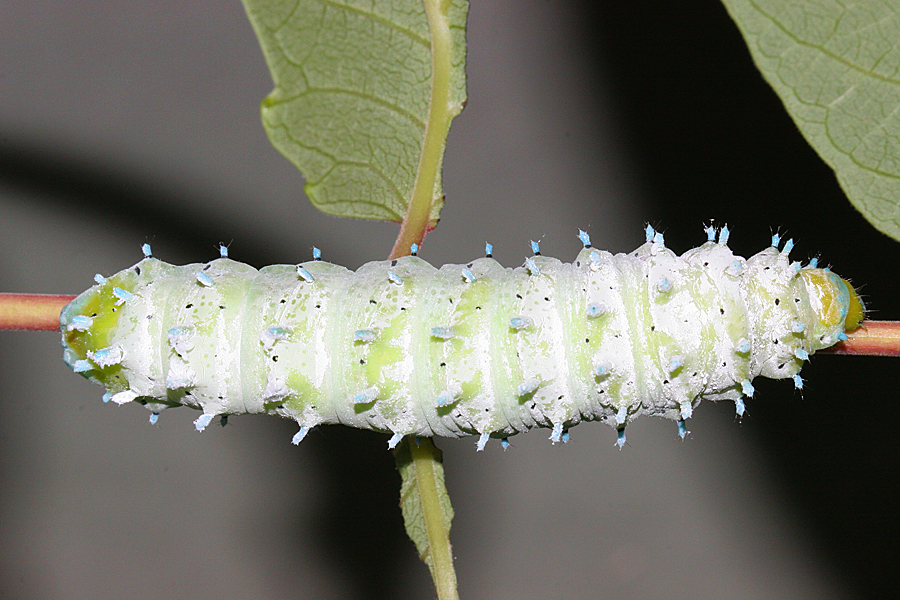Family Saturniidae, Subfamily: Saturniinae
Attacini - Hodges # 7759
Immatures
| Home Butterflies
- Moths Details |
| Adults
Cocoons |

First Instars Emerged 29 August 2013 - 5 mm long

Second Instar on 2 September, photo on 3 September

Second Instar on 2 September, photo on 3 September

Second Instar on 2 September, photo on 3 September

#4 Molted toThird Instar at 3:30 P.M. on 6 September,
photo on 7 September 2013

#4 Molted toThird Instar at 3:30 P.M. on 6 September,
photo on 7 September 2013

#4 Molted to Fourth Instar at 2:30 P.M. on 10 September
Photo on 5:30 P.M. 10 September 2013

#4 - Fourth Instar - Covered in a White Powdery Substance- Normal for this Species
The pale blue green body color can be seen beneath the powder
40 mm long at 8 P.M. 14 September 2013

#4 Close-up Showing Golden Yellow Head

#4 Molted to Fifth Instar 5:00 P.M. 16 September 2013
The caterpillar ate its old skin
including the powdery substance after it molted

#4 Molted to Fifth Instar 5:00 P.M. 16 September 2013

#4 Fifth Instar Close-up of Abdominal Prolegs
Also a close-up of the oval, black and white spiracles
used in breathing. Also notice how loose the skin is
which allows the caterpillar to substantially increase its size.

#4 Fifth Instar Close-up of head showing ocelli (eyes) and thoracic legs

Tubercles help protect the caterpillar from predators
Some have sharp spikes at the tip of the tubercle
Some caterpillars have spikes that sting like Stinging Nettle when touched

#4 Purged liquid 3:30 P.M. 25 September- 9 days as 5th Instar

First, Second, Third and Fourth Head Cases

Pupa after taking them out of cocoons in the spring

| Photo Details - ©Nicky Davis Ova received from John Richards who received them from Greg Houtz, Schuy Hill Haven, Pa. They are probably a non-native captive hand reared moth. However, there are reports that this moth still exists in the wild in Maryland, Delaware, New Jersey, Connecticut, Rhode Island, Massachusetts, New Hampshire, Vermont, Prince Edward Island and Missouri .The Missouri report of Cocoons found January 1, 1978 was verified March 05, 2009. It was first introduced to the U.S.A. along with the host plant Ailanthus altissima - Tree of Heaven in the 1800's. The Tree of Heaven has been banned in some states and is listed as noxious in 46 states. These I rear won't be released into the wild. Any species I rear so I can get life history photos are released only in the spot where the female was located. If that is not possible, they are not released. OVA Oviposited 19 August 2013 - Ten days as ova LARVAE Emerged 29 August 2013 - 5 mm long Molted to Second Instars on 2 September 2013 (4 days as 1st Instar) Molted to Third Instars on 6-7 September 2013 (5 days as 2nd Instar) Molted to Fourth Instars on 10-11 September 2013 (4 days as 3rd Instar) Molted to Fifth Instars on 16-17 September 2013 (6 days as 4th Instar) #4 purged liquid 3:30 P.M. 25 September (9 days as 5th Instar) #2 purged liquid at 4:30 P.M. 25 September (9 days as 5th Instar) #3 purged liquid at 7:00 A.M. 26 September (9 days as 5th Instar) #1 purged liquid in the afternoon of 26 September (9 days as 5th instar) Host Plants
Range 
|